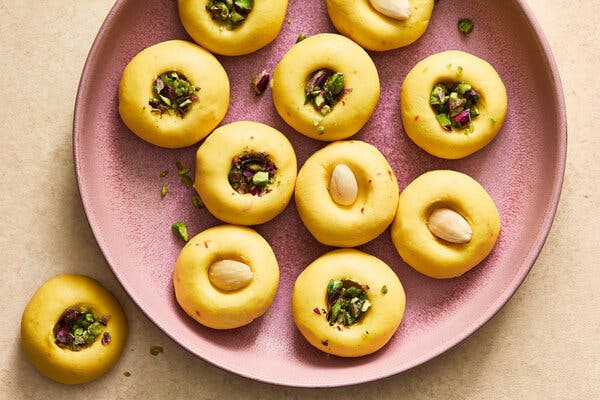Younger South Asian cooks are riffing on these classics, turning them into cookies, pies and ice cream, and (gasp!) adding salt.
Listen to this article · 4:17 min Learn more
The brightly hued sweets at a mithai shop — Barbie-pink spheres of chum chum, silver-glazed diamonds of kaju katli and golden laddoos glistening with ghee — are the stuff of childhood dreams.
They certainly were for Pooja Bavishi, who owns Malai Ice Cream, a scoop shop in Brooklyn and Washington, D.C. Growing up, she would make quick work of the boxes of mithai her family would buy in Edison, N.J., where they shopped for Indian ingredients. Mithai was also central to Diwali, which will be celebrated on Oct. 31 this year.
Recipe: Ice Cream Peda
But as her tastes shifted, she realized those treats could be too sweet — and they could use some salt.
“Sweet-on-sweet wasn’t something that was as appealing to me,” Ms. Bavishi said.
To some, the intense, untethered sweetness of mithai, a category of South Asian confections built on nuts, dairy and ghee (and, traditionally, no salt), is precisely the appeal. But for South Asian American cooks who grew up in a world of salted caramel and chocolate-covered pretzels, the mithai they prepare can look and taste quite different: cookies, pie or ice cream, with various ingredients to balance all of that conventional sweetness. And yes, that includes salt.
Thank you for your patience while we verify access.
